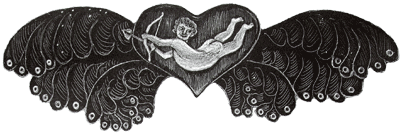Adventure, danger, romance and lust: Imagining the Christopher Street Piers
- Matt Pipes

- Sep 23, 2019
- 3 min read
So much of my work lately has been focused on understanding and capturing an era (let’s say between 1948 and 1982) in which lives for gays and lesbians changed dramatically as gay people organized and lobbied for civil rights. I think there is a lot we can learn from this era now as those rights are under fire, but I find the artifacts of this time equally intriguing because they illustrate how far we have come.

I read this morning about an exhibit at the Bronx Museum featuring the photography of Alvin Baltrop. It’s killing me that I can’t go because Baltrop documented the Christopher Street Piers (or Chelsea Piers - but not as they exist today), which I am currently obsessed with.
The piers along the Hudson River between Christopher Street and the Meat Packing district had been a place of queer significance for a long time, but for a period of time between 1973 and 1983 they became a sort of urban apocalyptic gay playground/interactive art space/home for marginalized queer homeless youth, particularly for queer youth of color. The piers were destroyed in 1988, and I never experienced them but when I go to New York and stay at the Jane Hotel I like to imagine I can still feel their presence.
History of the Piers:

The piers along the Hudson were the hub of shipping in the early 20th century in New York. The busy port brought with it a huge influx of sailors from around the world and this population of single, transient men made the piers a popular underground cruising area pretty much since it’s inception, particularly at night. By the mid 60”s the shipping industry had become much more centered around air travel and the boarding homes for sailors had become residential hotels as the West Village and Meat Packing District went into decline. The area was becoming a place that was considered a safe haven for Gays and Lesbians. Safety being a relative term, the mafia ran gay bars which offered a somewhat safe gathering space, although they were frequently raided, and the patrons of the bars were often blackmailed by the mafia. The parks and abandoned industrial buildings in the area became a refuge for queer youth who were homeless. Chelsea pier was an abandoned shell well before Stonewall, but commercial vehicles were parked there overnight, and going “between the trucks” was known as the place to cruise.

After Stonewall the area along the Hudson River became populated with gay owned bars and businesses and the abandoned piers became a popular place to hookup especially for men who were not out or did not want to go to the bars, but in 1973 a portion of the elevated highway that ran along the River collapsed under the weight of an asphalt truck. The cash strapped city had no money or desire to fix the derelict structure, so the piers were effectively cut off, the rubble creating a barrier that made the now mostly ruined beaux art terminal buildings an abandoned no mans land.

The piers were soon creatively adapted as a place for installation art, gay sex, sun bathing, nudity, gaytherings of all sorts as well as all the illicit behavior you could imagine. It was a dangerous place, besides the physical lack of structural integrity, there was crime... Sometimes violent crime, but there was refuge too particularly for the marginalized. The piers and debris from the derelict highway became shelter and home to a very gay, mostly gender non conforming, mostly of color population of homeless people. Queer activist Sylvia Rivera was among those who called the piers home for a time.

The piers were also a magnet for photographers like Baltrop, and Peter Hugar who were so drawn in to the atmosphere of the piers that they each (independently of each other) quit their day jobs to spend time documenting the gritty but magical environment.
The magic ended in 1983. Even before the cause and scope of the AIDS epidemic were fully known or understood the piers were a huge health and safety concern, whatever mysterious forces that were preventing the buildings from falling into the river were only barely working and the buildings were condemned, by 1988 they were all gone.
If you walk along the Hudson between Christopher Street and the meat packing district today you would never believe that this darkly romantic space ever existed there, or that it could exist at all. It would not be possible today to recreate it even if you wanted to. The area has been renovated into a waterway park with bike lanes and jogging trails and only a few old pilings in the water give any indication of what was once there.




Comentários